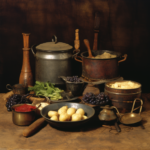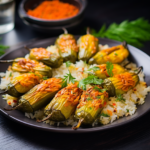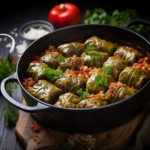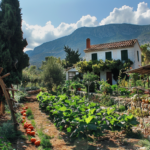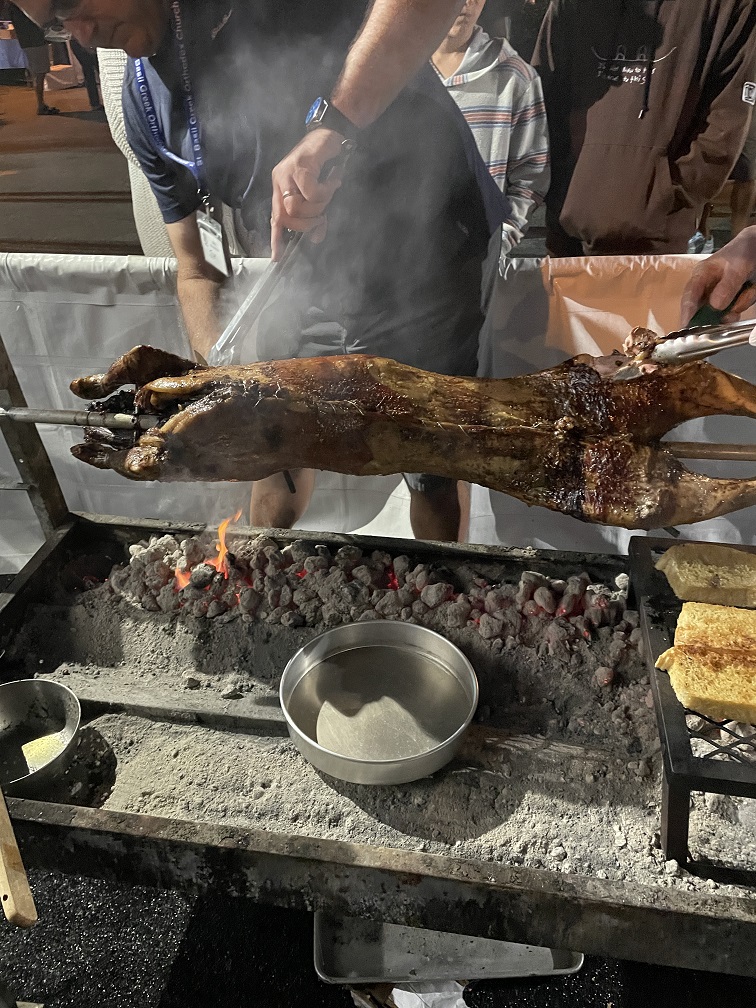
While deeply traditional, the practice of roasting Greek Easter lamb on a spit has evolved with modern times. In urban settings or for those without the means to roast an entire lamb, smaller cuts of lamb might be prepared on smaller grills, or different meats may be used. However, the essential spirit of the celebration remains unchanged, focusing on renewal, community, and joy.
The tradition of Greek Easter lamb on a spit is a vivid example of how food can be woven into the cultural and spiritual fabric of society, symbolizing themes of sacrifice, redemption, and renewal. For many, this tradition is a cherished part of Easter, eagerly anticipated as a time of joy and togetherness.
Lamb on a Spit: Historical Roots and Symbolism
The tradition of roasting lamb at Easter has ancient roots, blending Christian and pre-Christian elements. Lamb in Christianity is a symbol of Jesus Christ, referred to as the “Lamb of God.” This symbolism ties back to the Jewish Passover, where a sacrificial lamb was slain and its blood marked on doorposts as a sign of faith. In Greece, the roasting of an entire lamb also marks the end of the Lenten fast, a period of reflection and purification, celebrating the resurrection of Christ with joy and community feasting.
The Ritual of Preparation
The preparation of the lamb is a communal activity that begins the night before or early on Easter Sunday. Families and friends gather to prepare the lamb, which involves cleaning, seasoning, and skewering it on a long spit. The lamb is typically seasoned with generous amounts of olive oil, lemon juice, garlic, and traditional herbs like oregano and thyme, which not only flavor the meat but also celebrate Greece’s rich bounty of native herbs.
Lamb on a Spit: The Art of Roasting
Roasting the lamb is a slow and meticulous process that takes several hours, during which the lamb is continuously turned to ensure it cooks evenly. The process is communal and festive, often accompanied by music, dancing, and singing, making it as much a part of the celebration as the eating. The goal is to achieve crispy skin and tender meat, which are savored as much for their texture and flavor as for their festive significance.
Lamb on a Spit: Cultural and Social Dimensions
In Greek culture, the Easter feast is a pivotal social event that strengthens bonds among family and community members. The lamb on the spit, rotating slowly by the glowing coals, becomes a focal point around which people gather, share stories, and participate in the joys of communal cooking and eating. It is a time of generosity and hospitality, where even strangers are welcomed to join in the festivities.
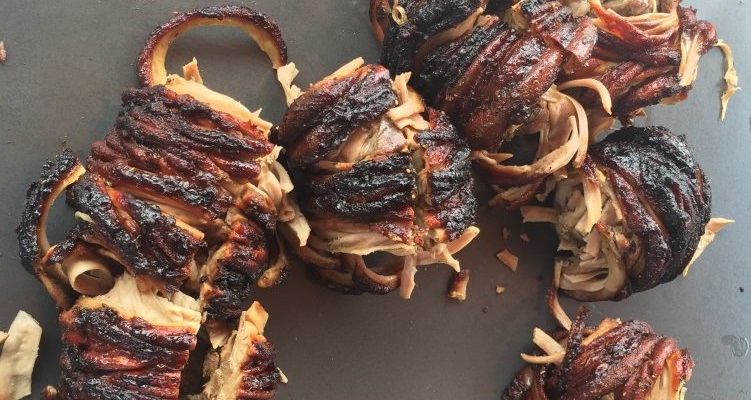
Lamb on a Spit: Modern Celebrations
While deeply traditional, the practice of roasting lamb on a spit has evolved with modern times. In urban settings or for those without the means to roast an entire lamb, smaller cuts of lamb might be prepared on smaller grills, or different meats may be used. However, the essential spirit of the celebration remains unchanged, focusing on renewal, community, and joy.
The tradition of Greek Easter lamb on a spit is a vivid example of how food can be woven into the cultural and spiritual fabric of society, symbolizing themes of sacrifice, redemption, and renewal. For many, this tradition is a cherished part of Easter, eagerly anticipated as a time of joy and togetherness.
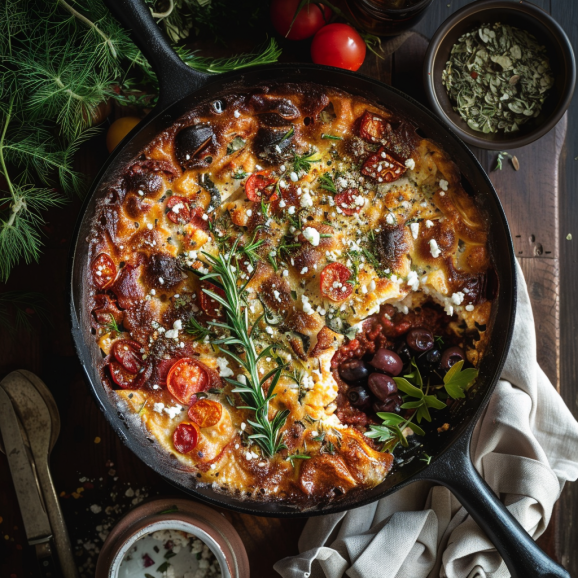
Greek Easter Lamb on a Spit Ingredients:
- 1 whole lamb, approximately 20-25 kg (45-55 lbs), cleaned and prepared for roasting
- 1 cup olive oil
- Juice of 4 lemons
- 6 cloves of garlic, minced
- 2 tablespoons dried oregano
- 1 tablespoon dried rosemary
- 1 tablespoon sea salt
- 1 teaspoon freshly ground black pepper
- Lemon wedges and fresh herbs (for serving)
Equipment:
- A large spit roasting setup
- Charcoal
- Butcher’s twine (if needed for securing)
Instructions:
- Marinate the Greek Easter Lamb on a Spit:
- In a large bowl, whisk together olive oil, lemon juice, minced garlic, oregano, rosemary, salt, and pepper to create the marinade.
- Place the lamb in a large marinating bag or a container large enough to hold it. Pour the marinade over the lamb, ensuring it is well-coated inside and out. Refrigerate overnight, turning occasionally to marinate evenly.
- Prepare the Spit and Charcoal:
- Soak your charcoal in lighter fluid for 15 minutes before lighting. Arrange the charcoal beneath the spit to create an even heat source. Light the charcoal and allow it to burn until it’s covered with white ash, indicating it’s ready for cooking.
- Mount the Lamb on a Spit:
- Secure the lamb on the spit rod, ensuring it’s balanced to rotate evenly. Use butcher’s twine to tie the legs and wings close to the body if necessary. This helps in even cooking.
- Begin Roasting:
- Position the lamb on the spit above the charcoal. Start roasting, ensuring to rotate the spit manually or use an automatic rotisserie feature if your setup has one.
- Baste the lamb with the remaining marinade every 30 minutes to keep it moist and flavorful.
- Cooking Time:
- The lamb will need to cook for approximately 4-5 hours, depending on its size and the heat of the charcoal. A meat thermometer inserted into the thickest part of the lamb (not touching the bone) should read 145°F (63°C) for medium-rare or 160°F (71°C) for medium.
- Rest and Serve:
- Once the lamb is cooked to your liking, remove it from the spit and let it rest for about 20 minutes before carving. This allows the juices to redistribute throughout the meat.
- Carve the lamb into serving pieces, and serve hot with lemon wedges and fresh herbs for garnish.
Greek Lamb on a Spit Serving Suggestions: Accompany your Greek Easter Lamb with traditional sides such as Greek salad, tzatziki sauce, roasted lemon potatoes, and plenty of fresh, crusty bread for a complete feast.
FAQ: Greek Easter Lamb on a Spit
Q1: What type of lamb should I use for spit roasting? A1: For spit roasting, a whole lamb that weighs between 20-25 kg (45-55 lbs) is ideal. This size is manageable for most spit setups and serves a good number of guests.
Q2: How long does the lamb need to marinate? A2: For the best flavor, marinate the lamb overnight. This allows the meat to absorb the marinade’s flavors fully.
Q3: Can I use a gas grill instead of charcoal for spit roasting? A3: While charcoal is traditional and imparts a specific flavor, a gas grill can be used for spit roasting. Ensure it’s capable of maintaining a consistent, low heat and that the lamb is positioned far enough from the burners to cook evenly.
Q4: How can I ensure the lamb cooks evenly on the spit? A4: Ensure the lamb is balanced on the spit rod and secured tightly. Rotate the spit regularly to cook all sides evenly. Using a motorized spit that rotates automatically is helpful.
Q5: What internal temperature should the lamb reach? A5: For medium-rare, aim for an internal temperature of 145°F (63°C), and for medium, 160°F (71°C). Use a meat thermometer in the thickest part of the lamb, avoiding bones, for an accurate reading.
Q6: How do I prevent flare-ups from dripping fat? A6: Keep a spray bottle of water handy to douse any flames caused by dripping fat. Also, positioning a drip pan beneath the lamb can catch drips and reduce flare-ups.
Q7: Can I roast vegetables at the same time as the lamb? A7: Yes, you can roast vegetables alongside the lamb. Place them in a roasting pan below the lamb to catch the flavorful drippings, or wrap them in foil and place them around the edges of the charcoal.
Q8: How many people can a whole spit-roasted lamb serve? A8: A whole lamb weighing 20-25 kg (45-55 lbs) can serve approximately 40-50 people, depending on serving sizes and the number of side dishes served alongside the lamb.
Q9: What should I do with leftovers? A9: Leftover lamb can be stored in the refrigerator for up to three days or frozen for longer storage. Use leftovers in sandwiches, salads, stews, or reheat gently to enjoy as is.
Q10: Is there a vegetarian alternative that can be cooked in a similar way for Greek Easter? A10: While lamb is traditional for Greek Easter, large whole vegetables like cauliflower or a stuffed squash can be roasted on a spit for a vegetarian option. Marinate and prepare them with similar herbs and spices for a festive and flavorful alternative.
Dive into the Juicy and Tender Chunks of Beef Souvlaki Delight in the savory flavors of beef souvlaki skewers, a Greek specialty grilled to perfection and served with creamy tzatziki sauce.
Delicious Souvlaki Skewers with Creamy Tzatziki Sauce Explore the authentic taste of Greece with these succulent souvlaki skewers, served with a refreshing homemade tzatziki sauce.
Grilled Octopus with Lemon and Olive Oil Experience the exquisite flavors of tender grilled octopus, marinated in zesty lemon and olive oil, a Mediterranean delicacy that will tantalize your taste buds.
Celebrity Chefs on Chef on a Bike YouTube
Greek TV Chef Anna-Maria Barouh
- Facebook: Anna-Maria Barouh
- Instagram: annamariabarouh
- Celebrity Chef, Food Stylist, Recipe Developer Anna Maria Barouh is our guest on Chef on a Bike. Anna-Maria is a regular on Greek Television and has a very popular food blog and is a magazine contributor.
- YouTube Episode: Chef on a Bike YouTube Episode
Cyprus’ Culinary Ambassador – Marilena Joannides
- Cyprus’ Culinary Ambassador – Marilena Joannides shows us how to make Easter Bread typical of Karpasia Cyprus. Marilena Joannides is a Culinary Expert known for her extensive research and knowledge in Mediterranean Cuisine. She is also the author of Cyprus Food Treasures. YouTube Episode: Chef on a Bike Episode
Grill Philosophy Greek Recipes and Grilling
- YouTube Channel: Grill Philosophy Explore traditional Greek recipes and grilling techniques with Grill Philosophy on Chef on a Bike.











